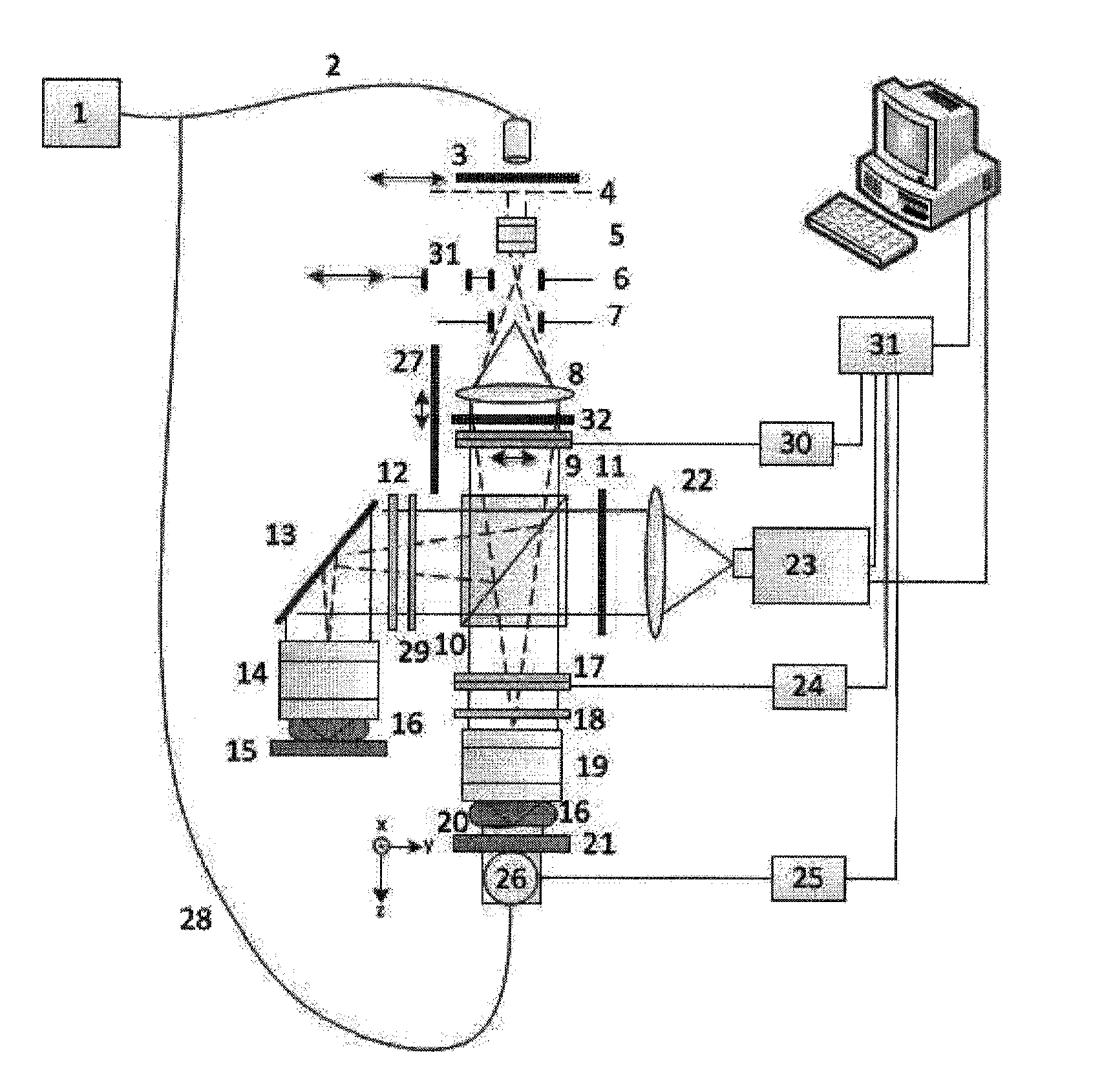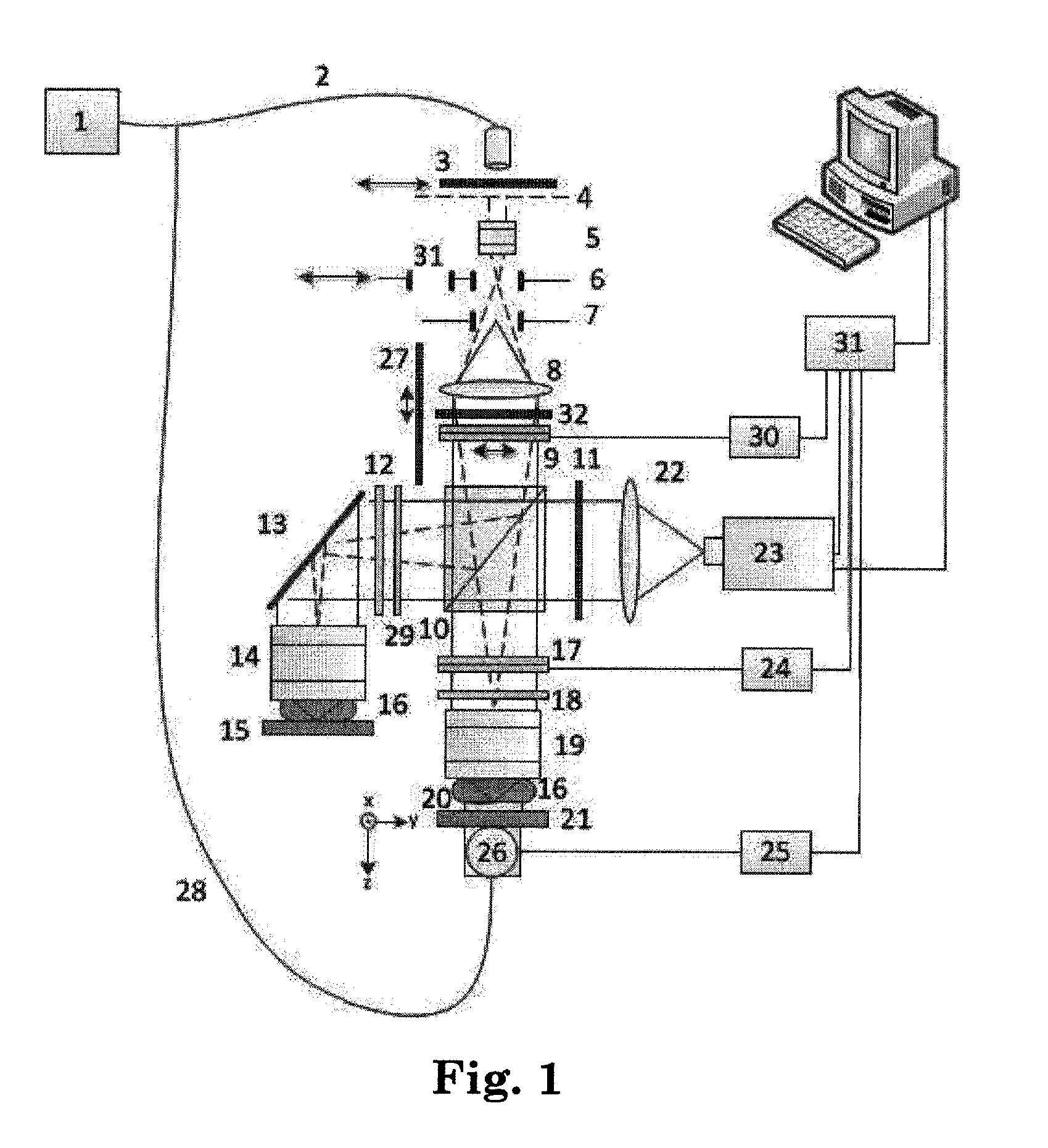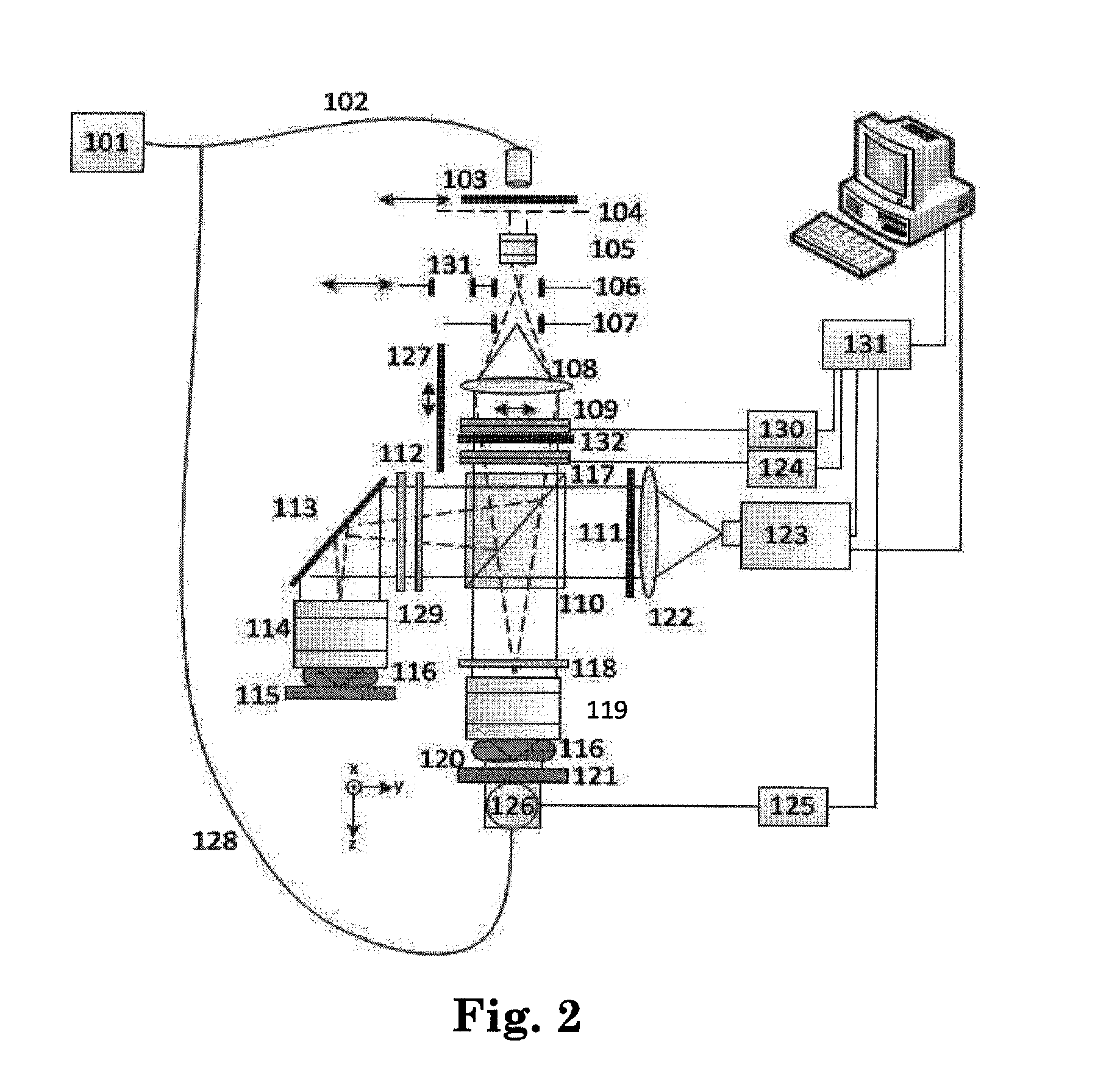True-spectroscopic dual mode high resolution full-field optical coherence tomography using liquid crystal devices
a liquid crystal device and true-spectroscopic technology, applied in the field of three-dimensional imaging, can solve the problems of fs-oct systems, sensitivity is much more expensive, and lack of the extremely high lateral resolution and speed obtainable by td-ff-oct systems
- Summary
- Abstract
- Description
- Claims
- Application Information
AI Technical Summary
Problems solved by technology
Method used
Image
Examples
Embodiment Construction
[0104]The present invention is a system and method that enable obtaining ultra-high resolution, true spectroscopic OCT images in high speed. The system does not use any mechanical moving elements for demodulating the interference signal. Two OCT operating modes are available; for ultra-high resolution the system allows either true spectroscopic TD-FF-OCT or wideband TD-FF-OCT imaging, whereas for high resolution and ultra-high speed the system allows FD-FF-OCT imaging. In the invention these two imaging modes are combined and therefore the invention benefits from the advantages inherent in each method.
[0105]By using LC devices in a unique integration scheme, the invention enables obtaining a dual mode FF-OCT and interference microscopy system which is quite compact, durable, relatively cheap, operating in high speed and in high resolution. The fact that a liquid crystal retarder(LCR) is used as the demodulating means holds an advantage over mechanically demodulating methods for it d...
PUM
 Login to View More
Login to View More Abstract
Description
Claims
Application Information
 Login to View More
Login to View More - R&D
- Intellectual Property
- Life Sciences
- Materials
- Tech Scout
- Unparalleled Data Quality
- Higher Quality Content
- 60% Fewer Hallucinations
Browse by: Latest US Patents, China's latest patents, Technical Efficacy Thesaurus, Application Domain, Technology Topic, Popular Technical Reports.
© 2025 PatSnap. All rights reserved.Legal|Privacy policy|Modern Slavery Act Transparency Statement|Sitemap|About US| Contact US: help@patsnap.com



